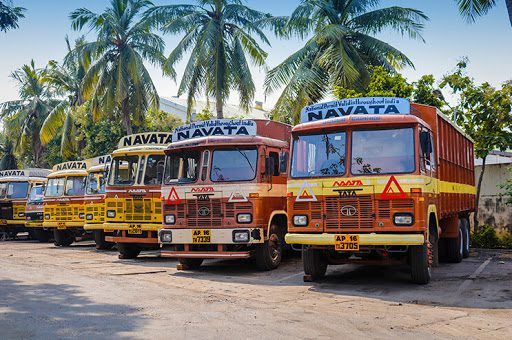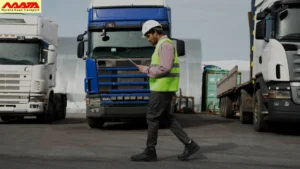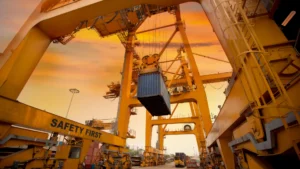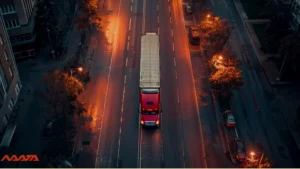Road Transport Industry After Lockdown, 2020
Table of Contents
Road Transport Industry After Lockdown
Transport Industry is generally a detailed organization and at the same time highly unorganized industry.
The impact of an extended lockdown on India’s transport Industry and logistics segment could be quite severe and it could be more menacing if lockdowns extend till June.
The world’s biggest lockdown has brought transportation of goods in India to a near halt.
According to the Indian Foundation of Transport Research and Training (IFTRT), the lockdown has taken out over 75 percent of road freight demand out of the picture. “60 percent of the road cargo pie comes from the manufacturing sector, another 10-15 percent from infrastructure and export-related activity.
With the freight and logistics sector contributing around 8 percent of India’s GDP and employing around 22 million people, the impact of a full month’s lockdown extension will be substantial.
The Business sector has been hit hard at this time of Corona Virus Lockdown. The non-essential manufacturing and delivering sector has affected the most. Country’s largest e-commerce businesses Amazon, Flipkart operations are hardly functioning.
According to the research agency’s analysts, the contraction in output between the last quarter of FY2019-20 (January-March) and the first quarter of FY2020-21 (April-June) could be as much as 40-45 percent. These sectors are hardly operating now.

Transport Industry After Lockdown
After Lockdown many businesses will restart their operations with full fledge-
The e-commerce markets like Amazon and Flipkart who have suspended their logistic services for sellers will be rehiring them again. This is an area where the transport industry and logistics startup have the opportunity to look forward.
The Corona Virus Lockdown disruption has also hit pharmaceutical players, delaying shipments of medicines and protective health gear like Medikabazaar, a business-to-business seller of medical supplies, has even struggled to get consignments to hospitals due to a shortage of trucks. A new start after lockdown will smooth the pharmaceutical shipments once again.
The slowdown of manufacturing and agricultural sector has remarkably affected the transport industry. Though transport Industries are the exempted sector but yet firms have to face a lot of issues in transporting sector. The manufacturing and agricultural sector has a direct impact on the Transport Sector.
In a situation like Corona Virus Lockdown, the supply chain for important things is becoming a big challenge. Truck drivers are leaving the vehicles on the highway and going back home. Manufacturers are running out of stocks and delivery agents of e-tailers refuse to go out due to fear of police harassment many have even reported that police demanded them bribe to allow them to deliver their goods. In such a situation, it has become a major challenge for the government and the administration.
As the government prepares to lift the lockdown in phases, the demand for trucks will increase but transport companies say the big challenge will be convincing drivers to return to work, even with higher salaries and allowances on offer.
Transport Industry will witness stressing and engaging journey after the lockdown because of mass hiring due to lack of labor, pending orders of the non-essential goods with the new ones coming in will add an extra burden.
Many sectors are unforeseeable even after the lockdown. Mainly the non-essential and luxurious product manufacturing and delivering services. This sector is very uncertain after the chaos because of the world-wide Corona Virus Lockdown.
This remarkable economic crisis across the country has just not affected the businesses but everyone and many problems and challenges will arise during and after the lockdown. Doubtlessly, these miserable events will act as the wake-up call to many companies and will strategize their future policies or events in a better way.

Road Transport Industry After Lockdown
Covid Impact on Logistics Industries
The COVID-19 outbreak that started engulfing various nations across the globe is forcing governments, national and international authorities to take unprecedented measures such as lockdown of cities and restricting the movement of people to check and control the exponential spread of the pandemic. This has consequently affected global trade and supply chain which has come to almost a standstill.
Most countries have restricted or stopped international flights and air travel, which has led to a deferred slowdown as far as the movement of goods are concerned. This has in turn shrunk the air freight capacity limited to the available and operational cargo aircraft and ferry passenger flights carrying only cargo. The shipping sector has also been hit as vessels are placed under quarantine for weeks before being allowed into the ports thereby slowing down processes. Shipping containers are stuck at the ports and on transit at state borders.
At the same time, raw materials or manufactured goods are unable to reach ports due to the lockdowns. Moreover, the demand for raw materials has reduced for the most traded commodities as most countries now require medicines, pharmaceuticals, medical supplies and medical equipment. Hence, shipping lines are operating underloaded thereby disrupting the balance of the ratio between revenue and the operational costs. Furthermore, there is a severe shortage of manpower at the air cargo facilities, terminals, shipping ports, inland container depots, warehouses, customs, government authorities and so on due to lockdowns which again hinders any scope of supply chain movement.
Secondly, there are vehicles owned or placed with leading fourth-party and third-party Logistics Industries who are on long hauls across the length and breadth of the nation. Such vehicles typically have aggregators (also known as market intermediaries or brokers) who have contracted a group of vehicles and placed under their aegis. They will bill with the 3PL operator and, in turn, pay the vehicle owner who bears all the operating expenses.
When the vehicles are on the move, they have designated pit-stops and other support mechanisms every 300-600 km in all major routes. When the lockdown was announced, most of the vehicles could park in the pit-stops, and the drivers were reasonably taken care of by the owners. When the system came to a halt, the number of vehicles required to be parked increased phenomenally, and the drivers used nearby villages as well to park. However, the drivers did not have the wherewithal to stay on and take care of the vehicles.
Once the vehicles resume operations, money for variable expenses to continue travel would be required. This needs to be provided at whichever place the drivers are. One may argue that with digital pay and ATMs, they may be able to handle the same. If not enabled till now, the contractors of the vehicles in coordination with 3PL operators may have to support the drivers and vehicle owners. Else, cash transfer can be made once they find nodal points.
Cash required would be higher than during normal business because once the clog is released, traffic may pile up at terminal points. There is likely to be a delay in turnaround time. It is estimated that the delay would be anywhere between five and seven days for the first four weeks.
In large projects, it would take time to mobilise the unloading contractors. In such projects, delays can go up to 30 days with the pile-up of vehicles. There are likely to be delays in organising return loads as well. These shouldn’t be a problem for 3PL provided the business conditions return to normal quickly. Hence, 3PL operators will have to provide for asset inefficiency. One may, however, have to see how the costs are recovered over time.
Road Transport Industry After Lockdown
Long-Term Impact of Pandemic on Logistics
The recovery and long-term impact of the pandemic on logistics may be affected by adaptions
and factors, as described below:
● Increased dedicated air cargo capacity: The airline industry is already reallocating fleet to
exclusively serve air cargo demand.
● Increased cargo inspections and cross border control protocols: Governments have
responded to the crisis with temporary trade embargoes and export restrictions for sensitive
cargo (such as medical supplies, pharmaceuticals). In the longer term, logistics costs may
increase due to tighter cross-border processes and controls fueled by concerns regarding the
transmission of diseases.
● Technology and e-commerce rise: Logistics has been in the midst of a tech-driven revolution.
Companies with robust digital capabilities that allow them to provide cargo visibility/traceability
and do business online are at an advantage. This would entail investments in technology, such
as the Internet of Things (IoT), cloud computing, automation, and data analytics. In the long
term, robotics, drones, and autonomous vehicles might reduce logistics services providers’
exposure to labor shortages.
● Reconfiguration of global value chains: The pandemic has exposed the vulnerability of
extended and complex value chains to production disruptions, particularly in the East Asia
Pacific region. As a reaction, many of these supply chains may shorten or diversify through
reliance on alternative partners (for example, nearshoring) or intensified efforts to bring
home (such as reshoring) strategic value chains. The shortening of supply chains may benefit
countries with capable manufacturing sectors and beneficial exports’ policy (for example,
Colombia, India, and Mexico) to partially substitute China over the medium term. There may
also be a trend towards placing additional warehousing capacity or dry ports near demand
centers to shorten the time to get goods to market.
● Recovery prospects will vary by country, subsector: As logistics is a diverse sector, recovery
prospects will vary depending on the length of lockdowns and the duration of the subsequent
economic crisis. Large companies with a diversified business (such as multiple clients, serving
different sectors in various countries/states) will be better placed to weather the storm.
After-effects of Corona Lockdown
It is significant that these problems will increase even after the business operations resume. Doubtlessly, these miserable events will act as the wake-up call to many companies and will strategize their future policies or events in a better way. Due to the Impact of Coronavirus on Road Transport, The fleet owners, in order to tackle this storm, should deal with this scenario efficiently by optimizing operations and embracing digital technology thereby reducing human intervention.
Powered By 360Presence
Blog- Road Transport Industry After Lockdown, 2020.
Leave a Replay
Road Transport Industry After Lockdown Road Transport Industry After Lockdown Road Transport Industry After Lockdown Road Transport Industry After Lockdown Road Transport Industry After Lockdown Road Transport Industry After Lockdown Road Transport Industry After Lockdown Road Transport Industry After Lockdown Road Transport Industry After Lockdown Road Transport Industry After Lockdown














